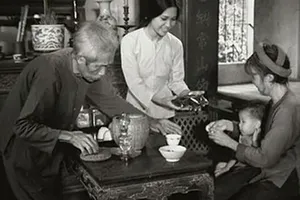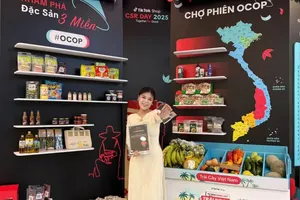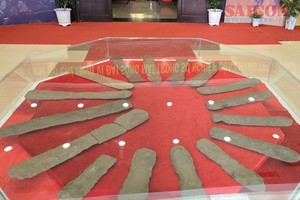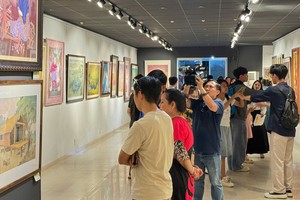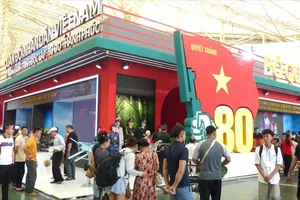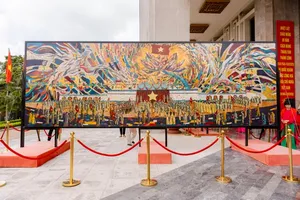Efforts for transformation
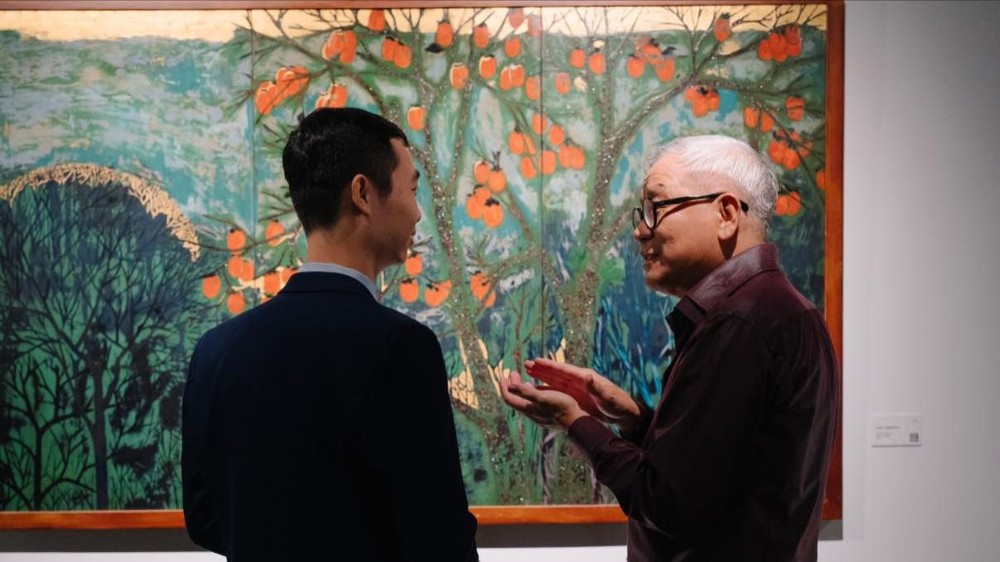
After carrying out several market surveys and organizing auctions, major auction houses in the world, such as France's Millon, Sotheby’s Hong Kong, and Christie’s from the UK, have appointed executive directors in the Vietnamese market. Millon has even officially opened a representative office in Hanoi, called Millon Vietnam. However, many collectors said that this progress is still too slow, as Sotheby’s auction house has long established a dedicated branch for the Indonesian and Thai markets.
The signal for a professional art market still requires more events, especially art fairs and exhibitions such as the Vietnam International Art Fair (VIA), which was held for the first time in Vietnam at the end of 2024. The fair was held in the Hotel Art Fair model (an art fair organized in a luxurious stay and opulent accommodations) at the 5-star Nikko Saigon hotel, gathering nearly 800 international artworks from more than 20 galleries at home and abroad.
The Hotel Art Fair model is still a relatively new concept in Vietnam. Viewers are surprised as the artworks are placed throughout the hotel, perhaps on the bed or even inside the wardrobe, instead of hanging on white walls. Each gallery participating in the fair displays its creations in a separate room, with the arrangement reflecting its voice, perspective, and unique story. However, the art fair only attracted over 1,000 visitors.
Art collector Phan H.H, residing in Thu Duc City, Ho Chi Minh City, said that the sector is still lacking many references for a professional art market. Art fairs are a basic professional buying and selling activity, but they still haven't received much attention. It is normal because many global professional markets worldwide saw many fairs and exhibitions without customers before reaching their current scale and reputation. What is noteworthy is that the art fairs have been organized, serving as a stepping stone for the gradual development of a professional market.
The market serves as a launchpad
According to many experts, the current art market still lacks secondary support components, particularly the role of intermediaries or art brokers. Currently, the sale of artworks in Vietnam primarily takes place directly between artists and collectors, which leads to numerous consequences. In contrast, a truly professional art market typically operates through intermediaries such as auction houses, art fairs, annual exhibitions, or galleries.
Basic questions such as, What does the art ecosystem consist of? Who decides the price of the artwork? How are artworks valued, and based on what conditions/factors? What does a curator do? What are the working rules with curators, galleries, and collectors? ... are still not well understood.
According to Prof. Dr. Nguyen Xuan Tien, Chairman of the Ho Chi Minh City Fine Arts Association, fine art exhibitions and sales of artworks are still being organized, but it is not yet a professional fine art market. The events are spontaneous activities. Additionally, there are many auction houses in the country, but their operations are not effective. The lack of many fundamental elements for a professional market leads to inaccurate pricing. There isn’t any professional market; therefore, the value of artworks depends on the aesthetic preferences of the customers. Some artworks are sold at very high prices, but their artistic value is not highly appreciated.
The lack of a professional art market is also a limitation for Vietnamese artists when entering the international market.
Curator Ace Le, Director of Sotheby’s Hong Kong in the Vietnamese market, said that currently, a common mistake made by many young Vietnamese artists on international auction platforms is overpricing their works. Many artists only learn about the prices of artworks by their domestic peers; meanwhile, there are many artists with strong backgrounds in Southeast Asia whose artworks are priced moderately. This causes difficulty for galleries and international auction houses when they want to represent Vietnamese artists.
In order to promote reasonable prices for Vietnamese paintings, completing the infrastructure and superstructure for a professional art market is necessary. Thereby, young artists gain a basic foundation for operating the market, finding suitable directions for the creative practice process, as well as self-managing and professionally valuing artworks.

